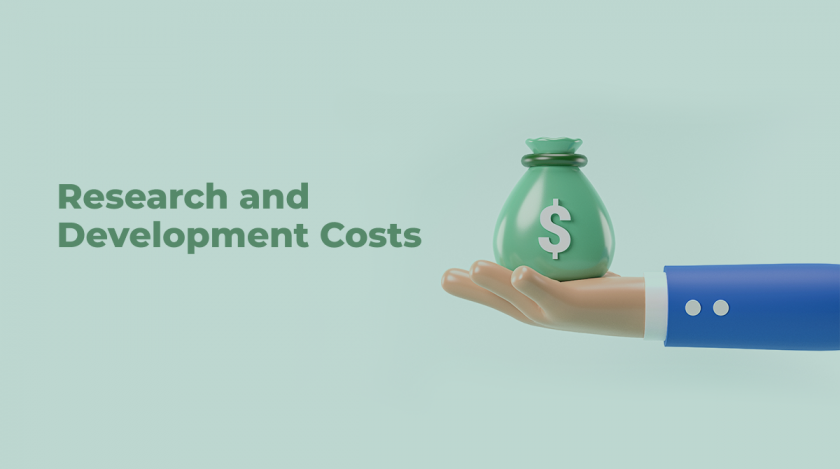What is Research and Development Cost?
Research and development cost meaning refers to the activities it undertakes to innovate and introduce new products and services. In order for organizations to maintain their competitive advantage and adapt to changing market conditions, R&D cost definition is crucial. A business can outsource these activities or carry out these activities internally. Typically, R&D focuses on resolving problems and answering questions related to the company’s operations.
As a business owner or manager, calculating research and development costs are essential to your success. But how do you know whether your company is spending enough on R&D? How can you calculate the exact amount of money it needs to spend on R&D? There are several ways that companies can track their research and development cost and stay on top of the numbers.
We will examine some of these methods in this article to ensure that your budget is well-spent!
A step-by-step method for calculating R&D expenses
Research and development expenditures are divided by a company’s market value to calculate its price-to-research ratio.
Step 1: Identify the Research and Development Projects.
Start by listing all the projects that qualify for this particular category of R&D expenses. These research and development cost examples include: New products or services, changes in manufacturing processes or materials (e.g., new product formulation), improvements in existing products or services (e.g., better customer service)
Step 2: Calculate Direct Labor Costs.
The direct costs are the actual costs you pay to produce the product. For example, if your company pays $100,000 for raw materials and another $100,000 for labor to make a widget, your direct cost would be $200k.
You should first calculate your direct labor costs by dividing your total employee salaries by the number of employees at your company (or simply multiply your employee salaries by 0.75). This will give you an idea of how much money goes into paying each employee each month.
It is not necessary to allocate direct costs to individual projects. Instead, use them as a base figure for calculating all your research and development costs over time!
For example, you would calculate the total cost of both projects if one required a lot of expensive materials and the other only used cheap materials and supplies.
Step 3: Calculate Indirect Costs.
Indirect costs in research and development costs are expenses that cannot be directly attributed to a specific project. These include things like depreciation, interest on the capital invested in equipment and software, and other maintenance-related expenses.
Now add up all other indirect labor expenses (like benefits) and divide them by the number of people who worked on that particular project—this is your total indirect cost for that project’s employees.
Method Of Overhead Allocation for Each Individual Research Project.
If one department is responsible for all of the company’s accounting while another handles marketing and public relations, you may need to allocate some of those indirect costs between them.
- To do this, simply divide each department’s total indirect cost by its total number of employees (or multiply them by 0.75).
Thus if your company has three departments: accounting, sales, and marketing, the overhead allocation for each department would be as follows:
Accounting: $350,000 / 10 people = $35,000 per person.
Sales and marketing: $1.5 million / 20 people = $75,000 per person.
- Once you have these numbers, add them together to get your total overhead allocation. For example:
Total overhead allocation: $85,000 per person + $75,000 per person = $160,000 per person.
- Now that you have your total overhead allocation, you can divide it by the number of employees who work in each department to get their share.
For example Accounting: $35,000 / 10 people = $3,500 per person.
Sales and marketing: $75,000 / 20 people = $3,750 per person.
- Once you have these numbers, add them together to get your total indirect cost per employee: $5,250 + $4,500 = $10,750 per employee.
- Now that you have your total indirect cost per employee divide it by the number of employees who work in each department to get their share.
For example Accounting: $10,750 / 10 people = $1,075 per person.
Sales and marketing: $10,750 / 20 people = $525 per person
Percentage of Revenue Method
You could allocate these indirect expenses based on a percentage of revenue (e.g., 50%). Or, you may also use the same percentage as direct costs (e.g., 50%).
A company making $500k in revenue and spending $250k on direct costs will have a $250k indirect cost.
However, if you’re using a percentage of revenue method to allocate indirect costs, then the amount will vary depending on how much money your business makes.
For example, if you make $2 million and have $1 million in direct costs, then your indirect expenses would be 25% (1/4 of 2 = 1/4).
Final Thoughts about the Importance of Research and Development Costs
When you’re trying to determine which method is best for your business, consider the following. If you use direct costs as a basis for allocation, then it’s easier to keep track of R&D expenses and predict profitability. However, if there are many different categories of indirect expenses (e.g., rent and utilities), then using a percentage of revenue method might be more accurate because it will give each category equal weight.
Using a percentage of revenue is easier if you’re just starting out because you don’t have any direct costs. As your company grows, it might be worthwhile to switch to calculating R&D costs directly.















